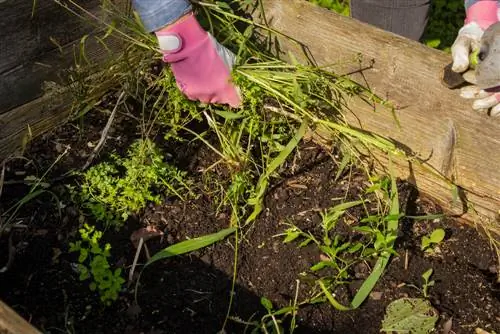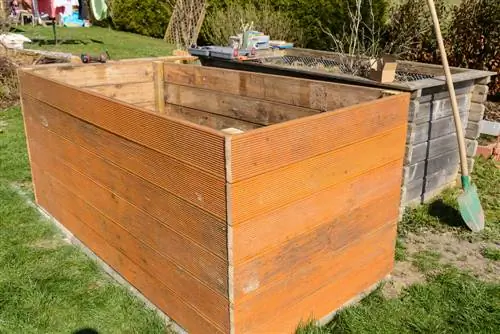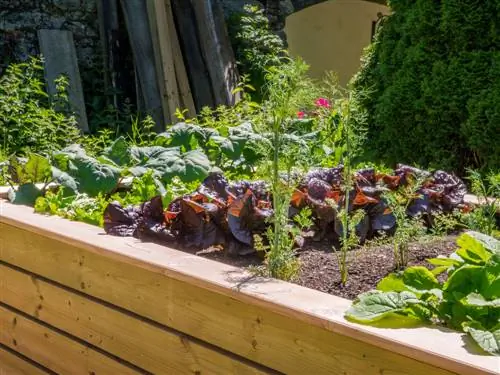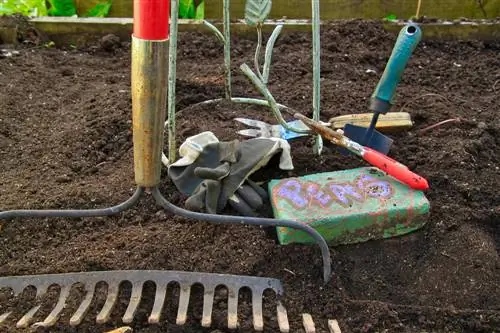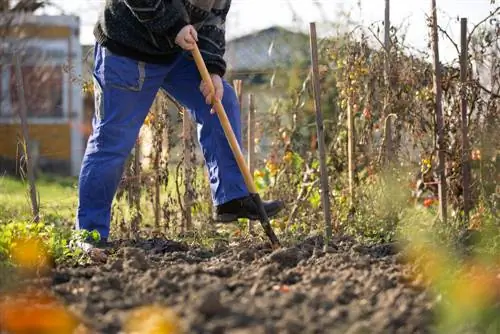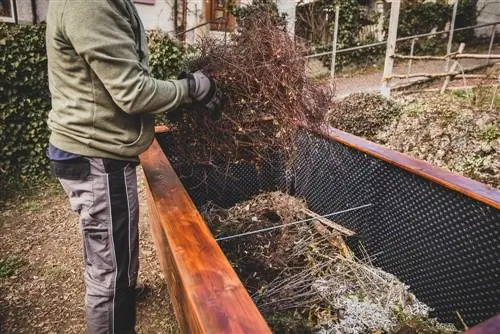- Author admin [email protected].
- Public 2023-12-16 16:46.
- Last modified 2025-01-23 11:21.
No question: In spring and summer there is a lot of work to be done in the garden - and therefore also in the raised bed. However, that doesn't mean you can put your feet up from autumn onwards. Instead, the raised bed can be planted with winter-hardy vegetables well into autumn. Autumn is also the right time to create or fill up a raised bed.
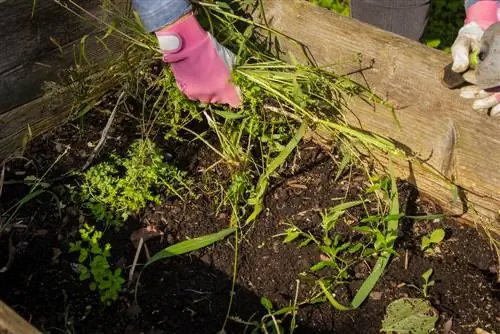
What can you do in the raised bed in autumn?
In autumn you can plant winter-hardy vegetables in the raised bed, such as late varieties of broccoli, kale, endive, spinach, lamb's lettuce and radicchio. Autumn is also suitable for new plants or topping up compost raised beds, which rot over the winter and can be planted in spring.
Creating and filling raised beds
If you want to create a classic layered compost raised bed, it's best to do this in autumn. The reason for this is simple: the rotting process causes such a freshly planted bed to collapse quickly, which, if it has already been planted, has a negative impact on the expected harvest. However, if you plant it in the fall, the rotting process will take place over the winter months - and you only need to fill the bed with fresh potting soil before planting in the spring.
Planting fall and winter vegetables
The raised bed can also be planted with frost-tolerant vegetables in autumn. From July or August onwards, plant late varieties of broccoli, kale, endives, spinach, lamb's lettuce and radicchio in the bed areas that become available. In summer, these can still be sown directly into the bed, but it is better to grow young plants. You can sometimes plant these in September or October, but in many cases the harvest will not take place until spring. With a cold frame or greenhouse attachment (€109.00 at Amazon) or a simple polytunnel, you can also ensure pleasant growth temperatures and protect the young plants from possible late frosts. Clear the winter bed by February at the latest, as preparation for the new season begins from then on.
Cleaning up and winterizing
Of course, you can also completely clear out the raised bed in the fall and make it winter-proof for the cold season. If the bed is completely unplanted, cover it with half-ripened compost, leaves and / or straw to protect against moisture and nutrient loss. If, on the other hand, the bed is occupied by perennial, frost-hardy plants, cover them with leaves and/or brushwood. Plants that are not sufficiently hardy - including many Mediterranean herbs or artichokes, for example - should be dug up and overwintered in a cool, frost-free place.
Tip
If you first create the raised bed, you can use the raised bed as a composter for finely chopped garden and kitchen waste throughout the fall and winter. Then fill it with fresh potting soil in the spring.

